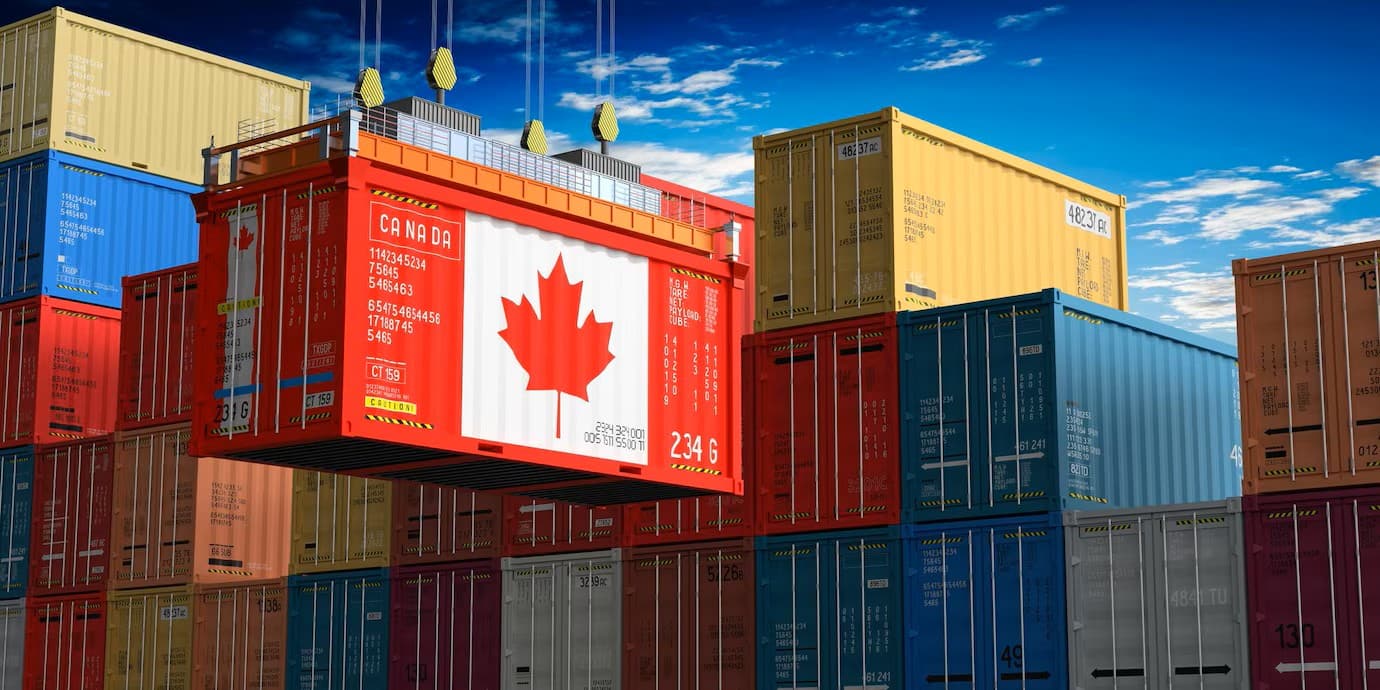Shipping a 40HQ Container from Tianjin to Toronto | Comprehensive Guide
Complete Guide to Canada-China Trade Logistics
This comprehensive guide covers everything you need to know about shipping a 40-foot high cube container from Tianjin, China to Toronto, Canada. Explore trade relations, shipping routes, costs, customs requirements, and special considerations for Canadian imports.

China-Canada Trade Relations
China is Canada's second-largest trading partner, with bilateral trade exceeding CAD 100 billion annually. Key exports from China to Canada include electronics, machinery, furniture, textiles, and consumer goods. The 40-foot high cube container (40HQ) is particularly popular for these shipments due to its additional height (9'6" vs standard 8'6"), providing 12% more cargo space than standard containers.
Key Trade Agreements
- Canada-China Foreign Investment Promotion and Protection Agreement (FIPA): Provides a stable legal framework for investors from both countries.
- Comprehensive and Progressive Agreement for Trans-Pacific Partnership (CPTPP): Both countries are members, facilitating trade across the Pacific region.
- WTO Agreements: Both countries adhere to international trade rules under the World Trade Organization.
While no comprehensive free trade agreement exists between China and Canada, most Chinese goods enter Canada under Most-Favored-Nation (MFN) tariff rates. Certain products may qualify for preferential treatment under specific programs.
Key Ports Overview
Tianjin Port, China
Tianjin Port is the largest port in Northern China and the world's 8th busiest container port, handling over 20 million TEUs annually. Key features:
- Deep-water terminals: Accommodates the world's largest container vessels
- Extensive facilities: 150+ berths with specialized container handling equipment
- Connectivity: Excellent road and rail connections to industrial centers in Northern China
Tianjin is particularly important for shipments to North America, with numerous direct services to both US and Canadian ports.
Toronto Logistics Hub, Canada
Toronto is Canada's largest logistics hub, though it's an inland port. Containers typically arrive via:
- West Coast Ports: Vancouver or Prince Rupert (rail to Toronto)
- East Coast Ports: Montreal or Halifax (rail/truck to Toronto)
- US Ports: New York, Norfolk, or Savannah (rail/truck to Toronto)
Toronto has extensive rail intermodal facilities and distribution centers serving the Greater Toronto Area, which accounts for 20% of Canada's population and 45% of its manufacturing.
Shipping Routes & Transit Times
Route Options & Transit Times
| Shipping Route | Transit Time | Cost Estimate | Key Features | Best For |
|---|---|---|---|---|
| All-Water via West Coast (Vancouver/Prince Rupert) | 35-45 days | $5,500-$6,500 | Direct ocean to Vancouver/Prince Rupert + rail to Toronto | Most shipments, cost-effective |
| All-Water via US West Coast (Tacoma/Los Angeles) | 35-45 days | $5,500-$6,500 | Ocean to US West Coast + rail to Toronto | Flexibility during Canadian port congestion, but AMS and ISF5 are requested |
| Intermodal via US East Coast | 30-40 days | $12,500-$13,500 | Ocean to US East Coast + truck to Toronto | Faster delivery to Eastern Canada, but AMS and ISF5 are requested |
Departure
Transfer
(3-5 days)
Sailing
(15-20 days)
Arrival
(3-5 days prior to rail)
(5-7 days)
Delivery
Shipping Options Comparison
Canadian Customs Requirements
e-Manifest & ACI (Advance Commercial Information)
ACI is the predecessor of e-Manifest, which is an upgraded version of ACI. Starting from July 4, 2021, all goods imported into or transiting through Canada must be declared through e-Manifest. Canada Border Services Agency (CBSA) requires advance submission of shipment information:
- Detailed cargo information including HS codes, shipper/consignee details, and commodity descriptions.
- Vessel details, container numbers, and seal numbers submitted by carrier.
Key Requirements & Deadlines
- Ocean Shipments: 24 hours before loading at foreign port
- Rail Shipments: 2 hours before arrival at Canadian border
- Highway Shipments: 1 hour before arrival at Canadian border
- Penalties: CAD 5,000 for first violation, CAD 10,000 for subsequent violations
Required Documentation
- Commercial Invoice (detailed with HS codes)
- Packing List (with weights and dimensions)
- Bill of Lading (original or express release)
- Certificate of Origin (if claiming preferential treatment)
- Permits for regulated goods (food, plants, chemicals)
Anti-Dumping & Countervailing Duties
Special Attention Required
Canada has anti-dumping and countervailing duties (AD/CVD) on certain Chinese products. These can significantly increase import costs and require special documentation.
Common Products Subject to AD/CVD
| Product Category | Duty Rate | Additional Requirements |
|---|---|---|
| Steel Products (pipe, tube, rebar) | Up to 150% | Import permits, detailed mill certificates |
| Aluminum Extrusions | Up to 121% | Country of melt and pour documentation |
| Furniture (upholstered, wooden) | Up to 295% | Detailed component sourcing information |
| Solar Panels & Components | Up to 286% | Detailed manufacturing information |
Compliance Requirements
Verify Product Status
Check CBSA's Anti-dumping and Countervailing Program website to determine if your products are subject to duties.
Accurate Classification
Ensure correct HS codes are used as AD/CVD duties are HS code specific.
Maintain Detailed Records
Keep complete manufacturing and sourcing documentation for 6 years.
Engage Customs Broker
Work with experienced customs brokers familiar with AD/CVD requirements.
Step-by-Step Shipping Process
Preparation & Booking
Confirm shipment details, select route, book with carrier or freight forwarder (4-7 days before cargo ready date).
Export Documentation
Prepare commercial documents, submit China export declaration, arrange container pickup (3-5 days).
Submit ACI e-Manifest
Provide all required data to CBSA at least 24 hours before vessel loading.
Ocean Transit
Vessel departs Tianjin, transits Pacific Ocean to West Coast Canada (15-20 days).
Canadian Arrival & Rail
Container unloaded at Vancouver/Prince Rupert, transferred to rail for Toronto (3-5 days handling + 5-7 days transit).
Customs Clearance
Submit final documents to CBSA, pay duties and taxes, clear customs (1-3 days).
Final Delivery
Container delivered to Toronto destination, unpacked, and returned to depot (1-2 days).
Duty Estimate
Canadian import duties typically range from 0-18% based on:
- HS classification
- Country of origin
- Value of goods
Plus:
- GST: 5% (federal)
- PST: 0-10% (provincial)
- HST: 13-15% (combined)
There is an import duty estimate calculator available on CBSA
Essential Tips
- Book 3-4 weeks before cargo ready date
- Ensure ACI e-Manifest submitted 24+ hours before loading
- Verify HS codes for accurate duty assessment
- Check for anti-dumping duties on your products
- Avoid peak seasons (Aug-Nov, Jan-Feb)
Frequently Asked Questions (FAQ)
-
How early should I book a 40HQ container before shipping?
Book 5 to 7 days in advance to secure vessel space.
-
Can I track my container during shipping?
Yes, we offer real time AIS satellite data visualizing your shipment's trace from end to end
-
What happens if my shipment is held at customs?
Your customs broker will be notified and may need to submit additional documents or assist in inspection clearance.
-
Is it cheaper to route via US ports and then truck to Toronto?
No, it will be much higher than via Vancouver and then by rail to Toronto. Via US ports could be an alternative option when Vancouver and Prince Rupert experiencing sever congestion.

